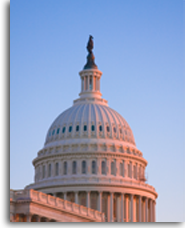Trying to separate the wheat of legitimate concern about how the presidential election is going from the chaff of mere fear-mongering, I wrote a piece at New York assessing Trump’s electoral college advantage, such as it is:
With under six weeks left until Election Day, there are three major sources of anxiety besetting those who devoutly hope for a Kamala Harris victory over Donald Trump. One may not go away until January: the high probability that the 45th president would again try to overturn a defeat via legal action or perhaps even violence. The other two concerns are less distinct, if still alarming. One is that pollsters will once again crucially underestimate the Trump vote, either in the battleground states (as they did in 2016) or in both the national totals as well as the battleground states (as occurred in 2020). Pollsters keep assuring us they are making every effort to correct past problems and reach a truly representative sample of voters, and it’s worth remembering that there was very little polling error in 2022. But to many Harris supporters, no lead is going to feel safe.
A final source of concern is that any Harris lead in national polls, even if they are totally accurate, won’t be enough because Trump has an Electoral College advantage. This means he can significantly undershoot a national-popular-vote plurality and win anyway, as he did in 2016 (when Hillary Clinton beat him by 2.1 percent in the popular vote) and nearly did in 2020 (when Joe Biden beat him by a pretty big 4.5 percent in the popular vote, but Trump still came within 44,000 votes in Arizona, Georgia, and Wisconsin of gaining a tie in the Electoral College). So even if Harris leads Trump by two or three or four points in the national polls, and those polls do turn out to be correct, she could lose anyway — in theory, at least.
The source of this Electoral College advantage (which did not exist as recently as 2012) can be explained in two ways. The first is that the handful of key battleground states are simply more Republican than America as a whole, which means they’re winnable with a smaller vote than the average vote share nationally. In 2016 and 2020, the so-called tipping-point state that gave one candidate or the other the 270th electoral vote necessary for victory was Wisconsin, which in both cases was nearly dead even. This year, the tipping-point state might be Georgia or Pennsylvania, and for the most part, polls have shown both as closer than the national vote spread between Harris and Trump. But probably the simpler way to explain any popular-vote/electoral-vote discrepancy is that candidates can and will “waste” votes in states they either can’t lose or can’t win. In 2020, for example, Biden got a huge number of votes beyond what he needed to carry the large states of California, New York, and Illinois, while Trump’s vote was more efficiently distributed among the states he needed to win.
Interestingly enough, in a deep dive on this subject, the New York Times’ Nate Cohn suggests that Trump’s Electoral College advantage could fade significantly this year because he’s making gains over his past performance in both the Deep South states that are in the bag for him and states like New York and California, which are sure to go for Harris but perhaps by diminished margins.
The bottom line is that maybe Harris does not need to beat Trump nationally by 5 percent to win, but what she does need won’t be clear until the votes are counted. The even more basic point to remember, however, is that national polls are simply an estimate of the national popular vote, and, unfortunately, the national popular vote just doesn’t matter in presidential elections beyond conferring bragging rights. If it did, we’d be remembering the presidencies of Al Gore and Hillary Clinton.
This does not mean national polls are useless by any means. Their typically larger samples make them essential for understanding both trend lines and the performance of candidates among different groups of voters. And unlike state polls, they are both frequent and diverse, making averages more reliable. In some states, polling is dominated by pollsters with dubious methodologies and records, making the averages suspect as well. And it bears remembering that the national-popular-vote winner has indeed won the presidency in 23 of the past 25 elections spanning a century.
But until the dust has settled, it will be difficult for highly informed Harris backers to forget the fact that in 2020 the final national polling averages at FiveThirtyEight showed Biden leading Trump by 8.4 percent and it still wound up being a nail-biter. So while you should definitely read national polls, it would be a good idea not to believe they necessarily predict the winner.



